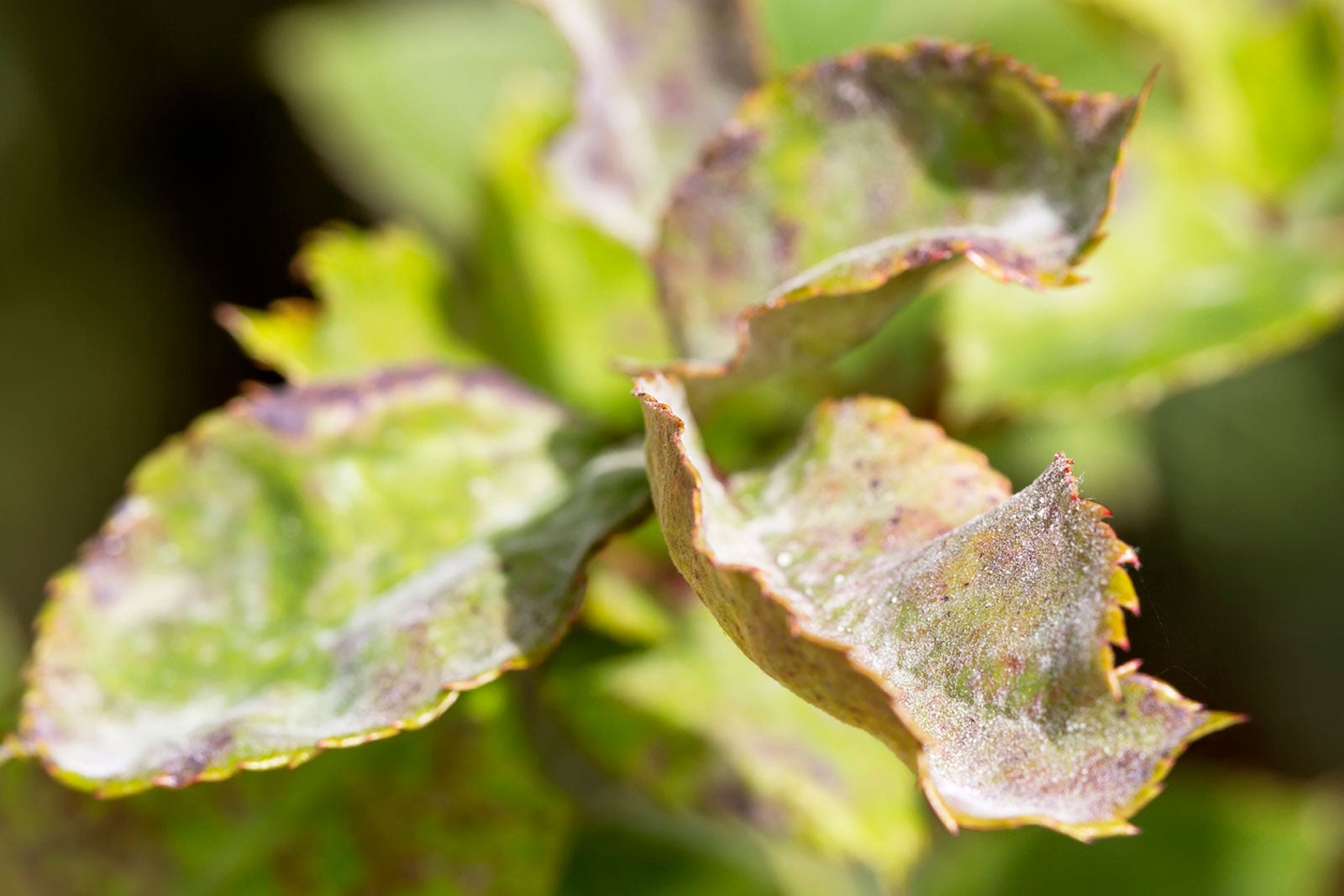Powdery Mildew Greenhouse Conditions: Managing Greenhouse Powdery Mildew

Powdery mildew in the greenhouse is one of the most frequent diseases to afflict the grower. While it does not usually kill a plant, it reduces the visual appeal, thus the ability to make a profit. To commercial growers it is invaluable to learn how to prevent powdery mildew.
Greenhouse conditions often facilitate the disease, making managing greenhouse powdery mildew a challenge. That said, powdery mildew greenhouse control is attainable.
Powdery Mildew Greenhouse Conditions
Powdery mildew affects many of the commonly cultivated ornamentals grown in greenhouses. It is a fungal disease that may be caused by different fungi such as Golovinomyces, Leveillula, Microsphaera, and Spaerotheca.
Whichever fungi is the causal agent, the results are the same: a downy white growth on the plant’s surface which is actually a multitude of conidia (spores) that are easily spread from plant to plant.
In the greenhouse, powdery mildew can infect even when the relative humidity is low but becomes severe when relative humidity is high, over 95%, especially at night. It does not require moisture on the foliage and is most prolific when temps are 70 to 85 degrees F. (21-29 C.) with relatively low light levels. The close proximity of plants in a greenhouse can allow the disease to spread unchecked.
How to Prevent Powdery Mildew
There are two methods of managing powdery mildew in the greenhouse, prevention and the use of chemical controls. Keep the relative humidity below 93%. Heat and ventilate in the early morning and late afternoon to reduce the high relative humidity during the night. Also, maintain space between plantings to reduce the humidity levels.
Clean the greenhouse between crops, making sure to remove all weeds that act as hosts. If possible, select resistant cultivars. Utilize preventive applications of biological fungicides, if necessary, as part of a rotation with chemical fungicides.
Gardening tips, videos, info and more delivered right to your inbox!
Sign up for the Gardening Know How newsletter today and receive a free copy of our e-book "How to Grow Delicious Tomatoes".
Powdery Mildew Greenhouse Control
Powdery mildew is notorious for its ability to develop resistance to fungicides. Therefore, different fungicides should be utilized and applied prior to the appearance of the disease.
Powdery mildew only afflicts the upper layer of cells so chemical controls are unnecessary when the disease is at its peak. Spray as soon as the disease is detected and rotate amongst the fungicide choice to discourage resistance.
For particularly susceptible crops, spray fungicides prior to any symptoms and apply systemic fungicides proven to be effective against the disease every two to three weeks according to the manufacturer’s instructions.

Amy Grant has been gardening for 30 years and writing for 15. A professional chef and caterer, Amy's area of expertise is culinary gardening.
-
 Terrifically Tubular Flowers For Hummingbirds: 9 Tube-Flowered Plants To Attract Hummers
Terrifically Tubular Flowers For Hummingbirds: 9 Tube-Flowered Plants To Attract HummersGrowing tubular flowers for hummingbirds helps you create the optimum feeding conditions for your winged friends. Here are nine tubed delights for hummers
By Tonya Barnett
-
 How To Grow Hydroponic Tomatoes For Fresh Indoor Harvests – No Soil Required
How To Grow Hydroponic Tomatoes For Fresh Indoor Harvests – No Soil RequiredLearning how to grow tomatoes in water is easy and allows you to harvest fresh-home-grown produce in every season without any mess.
By Ellen Wells